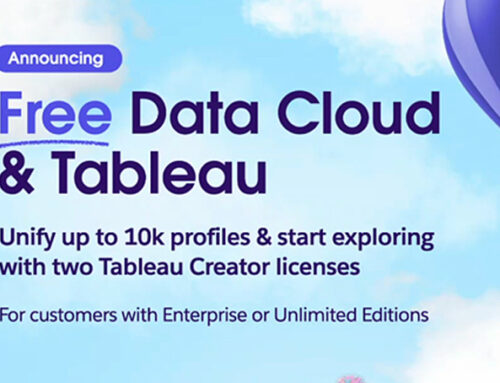By: The EMS Consulting Marketing Cloud Team
In early August, Marketing Cloud launched a new set of feature enhancements to make an amazing product even better. In this article, we will break down some of the new features and give you a taste of how this can help your Marketing efforts.
First, the highlights of what is new in Marketing Cloud as of this month:
- Journey Builder:
- Find and Remove a Journey Contact
- Granular User Permissions in Journey Builder
- Re-Engage Online Shoppers with Behavioral Triggers
- Administration
- Receive Send Error Notifications with Alert Manager
- Discontinue Use of Internet Explorer 11 for Marketing Cloud
- Multi-Factor Authentication with Marketing Cloud
Find and Remove a Journey Contact
Journey Builder has always been good at providing metrics around how contacts flow through a journey. If you have a decision split in place, Journey Builder will tell you how many contacts went down each path; however, it has always been a challenge to get anything more granular than contact counts down each path. In the latest release, Marketing Cloud has solved this with the ability to review a specific contact’s path through a journey, and even remove that contact mid-journey.
For both running or stopped journeys, you can now open the Journey Health panel and find a specific contact and see the exact path they took or remove them as needed. If a contact entered a journey more than once, you could even review each of their paths separately.
While this data will only go back for 30 days, it will be very helpful with troubleshooting the experience of individual contacts. Additionally, this will be very helpful with testing journeys, allowing us to run multiple tests at the same time with different test cases and tracking the results at the contact level. Decreasing the testing time of a journey will be a huge win with this feature, as will the increased level of support for live journeys.
Granular User Permissions in Journey Builder
Marketing Cloud has an expansive set of permissions available to Administrators, allowing you to fine tune each user or role’s experience. Well, that set got even better with the new user permissions for Journey Builder.
Before this release, you could grant or deny access to Journey Builder, but not really control what happens with the journeys themselves. Now, Marketing Cloud has provided three new permissions to better control how your team uses Journey Builder. Those permissions are:
- Create / Edit – users with this permission can create or edit a journey, configure activities, and even set goals and exit criteria
- Activate / Stop / Pause / Resume / Send / Schedule – there is a lot here, but basically this allows users to change the state of existing journeys
- Delete – as expected, this permission allows users to delete existing journeys
These new permissions will be very helpful as your team grows and you expand your use of Journey Builder. New Marketing Cloud resources can be granted permissions to build journeys, but not activate or delete them. Those permissions could be saved for more experienced resources, preventing journeys from being lost or activated too soon, resulting in unexpected emails going out to your customers.
Re-Engage Online Shoppers with Behavioral Triggers
This is an incredible new feature available if you have Einstein Recommendations enabled. It does require a bit of set up work but addresses an important pain point if you have an online retail site.
According to Salesforce, “An estimated $4.6 trillion of merchandise is left unpurchased in shopping carts online. Highly personalized behavioral campaigns are often effective in recovering purchases.” Marketing Cloud’s new Behavioral Triggers helps automate and address this. So, how does it work?
First, you need to have Einstein Recommendations enabled. If you are unsure if you have this, please reach out to your Account Executive to confirm. Second, you will need a catalog of assets that will be used to sync with user behavioral data, and Collect Tracking Code to monitor key variables on your website. Once that is in place, we can create the Behavioral Triggers, and data on items like Abandoned Cart, Abandoned Browse, and Abandoned Wish List will be added to data extensions which can be used in journeys or email campaigns.
Imagine, with Behavioral Triggers set up, if a customer leaves items unpurchased in a shopping cart, Marketing Cloud can capture that data, and then represent images of those items dynamically in the body of an email sent in a journey, and all done automatically to help recover potentially lost sales.
Receive Send Error Notifications with Alert Manager
Salesforce and Marketing Cloud have a strong commitment to Trust. As part of that commitment, Marketing Cloud has introduced Alert Manager, which monitors email sends for errors, and proactively emails administrators when there is an issue.
Alert Manager can be found under Setup > Settings > Company Settings, and it allows you to enter email addresses of administrators that should get alerts when there are issues with email sends from Email Studio, Automation Studio, or Journey Builder.
This is a big step forward for Marketing Cloud administration, as it allows administrators to be informed as issues are happening with email sends and resolve them early, as opposed to learning about it after the fact if someone calls in saying they are not receiving emails.
Discontinue Use of Internet Explorer 11 for Marketing Cloud
Effective December 31, 2020, Marketing Cloud will end support and access to Marketing Cloud for Internet Explorer 11. It is recommended to use the latest version of Chrome or Firefox. For an updated list of the supported browsers, click here.
Multi-Factor Authentication with Marketing Cloud
With many online security threats out there like phishing attacks, credential stuffing, and account takeovers, we need to ensure that we are as protected as possible. To that end, Marketing Cloud is rolling out support for Multi-Factor Authentication (MFA). MFA requires that any user that attempts to log into Marketing Cloud provide a separate authentication factor in addition to their username and password. This will help prevent unauthorized access to Marketing Cloud and your marketing data.
New Marketing Cloud orgs provisioned in August 2020 or later will have this enabled automatically. Org provisioned before August 2020 are strongly encouraged to enable MFA. When you enable MFA, you can choose from many strong authentication factors, such as: Salesforce Authenticator app, security keys that support U2F or WebAuthn, or time-based one-time passcodes apps, such as Google Authenticator, Microsoft Authenticator, or Authy.
In Conclusion
The above items are a few of the things that we at EMS Consulting are excited about or feel are important to highlight in this new release. There are many more items included in the release that make Marketing Cloud an even more amazing tool to use. To view the full list of items included in the July 2020 release, click here.
If you are interested in more information on any of the release items or would like to see how EMS Consulting can help you get the most out of them, please contact our team.






